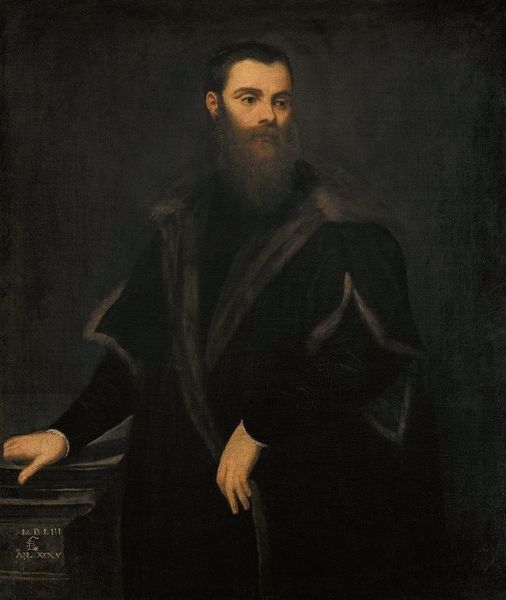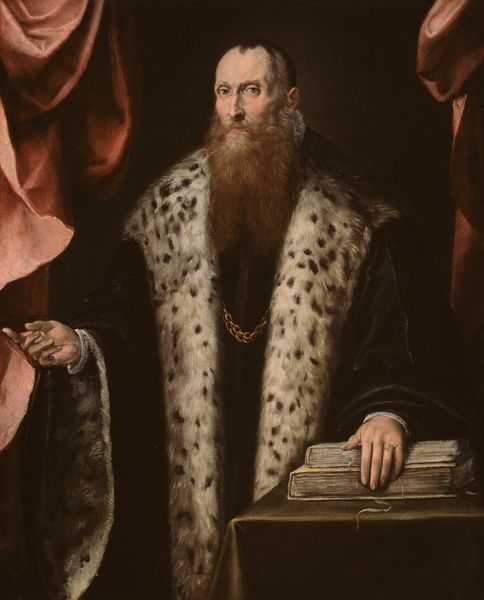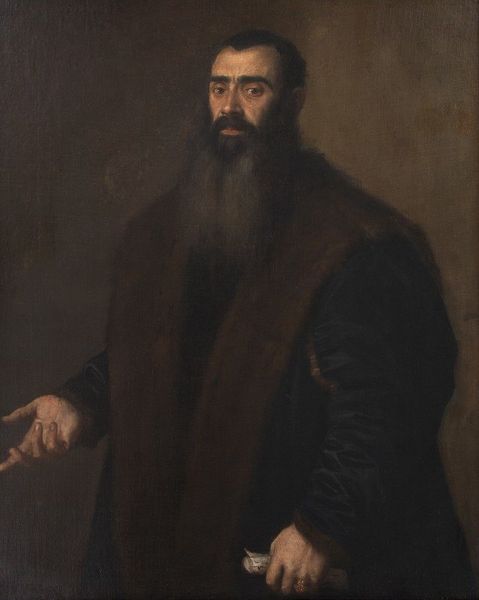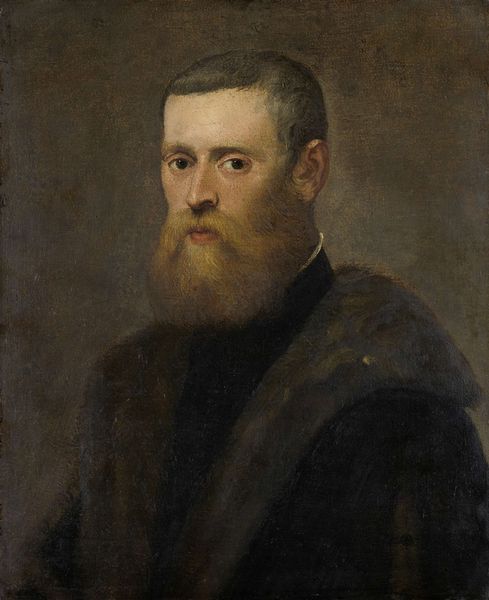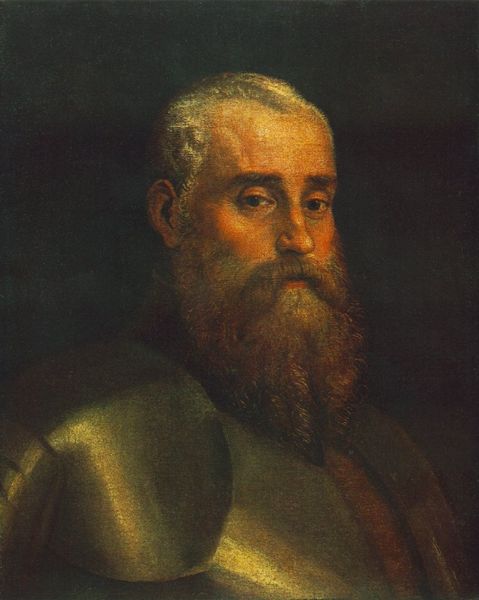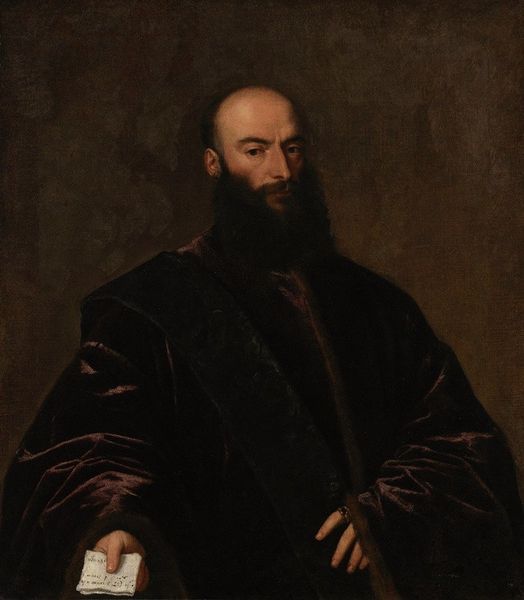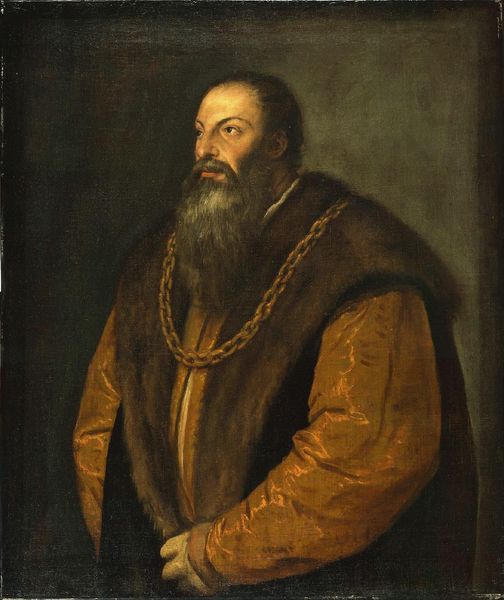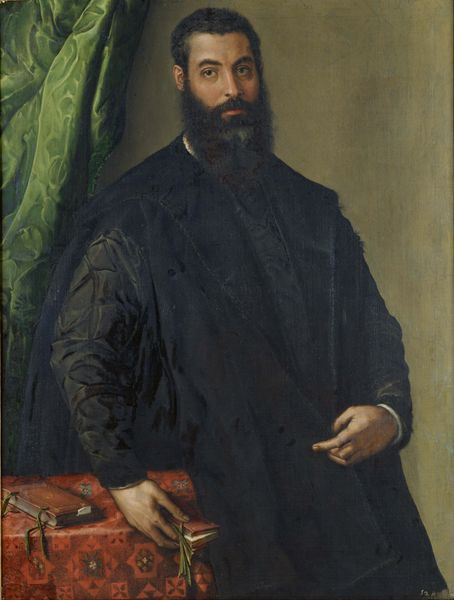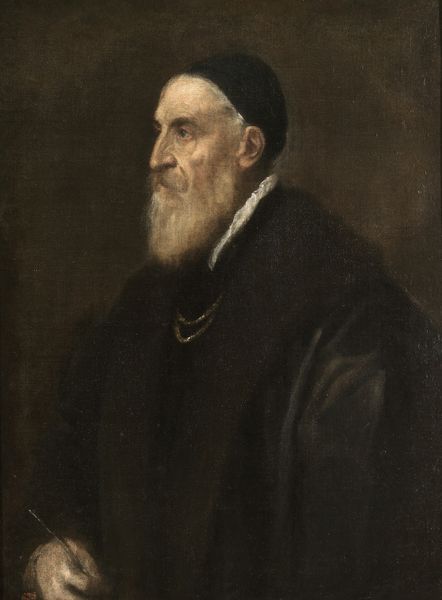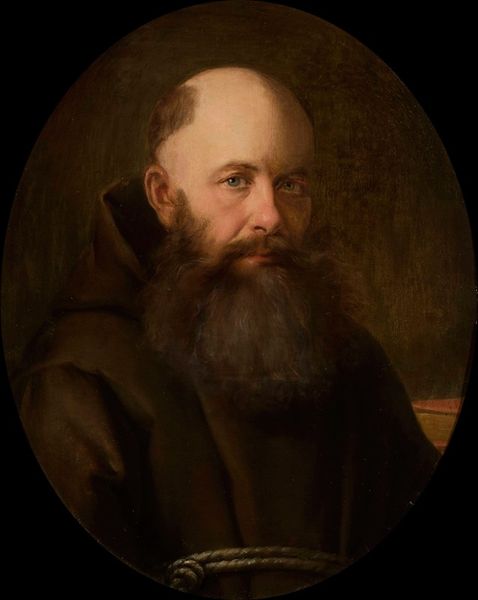
painting, oil-paint
#
portrait
#
painting
#
oil-paint
#
mannerism
#
figuration
#
italian-renaissance
#
realism
Copyright: Public domain
Curator: What a striking individual. Jacopo Pontormo painted this likeness of Niccolò Ardinghelli around 1542, rendering his subject in oil paint with remarkable detail. Editor: Yes, it's powerful! He seems a man caught in thought, there’s such an intense stillness to his gaze and posture. That heavy, dark cloak…it almost swallows him. Is he meant to seem burdened by something? Curator: It’s interesting you say that. Ardinghelli was a prominent cleric; he rose through the ranks to become a Cardinal after his death. Pontormo has positioned him with that book, suggesting intellectual and spiritual pursuits were central to his identity and status. Editor: The book…it seems so fragile in his hands. And what’s most arresting is the asymmetry of the composition, combined with the slightly odd colour choices – a certain muddiness in the blues and greys. It disrupts a purely celebratory reading of power. Is this, perhaps, a critique woven into the representation? Curator: Mannerism, the artistic movement to which Pontormo belonged, was all about exaggerating proportion and playing with perspective, moving away from High Renaissance ideals. It emerged during a period of significant upheaval and crisis in Europe. These were turbulent times, deeply unsettling traditional power structures, the church included. So it may point toward that turbulence of thought in representing a man within that system. Editor: The heavy cloak can suggest, as you point out, stature. Yet I feel it might signal a kind of constraint, perhaps a kind of melancholy linked to the burden of office. The window seems to open on darkness— Curator: That cloak also seems to participate in this era’s use of sumptuous and luxurious material that would make explicit claims to wealth, rank, and sophistication in 16th-century Florence, speaking volumes to the elite culture. Editor: Right. Thinking of our moment today, perhaps a reading could focus on the inherent tension when representing figures of authority and class... the artifice and the human elements beneath the surface, at odds with one another. Curator: Looking closely at art history often reveals how little has changed, doesn’t it? Editor: Precisely. A testament to the continued relevance and dynamism of our readings and reinterpretations.
Comments
No comments
Be the first to comment and join the conversation on the ultimate creative platform.
